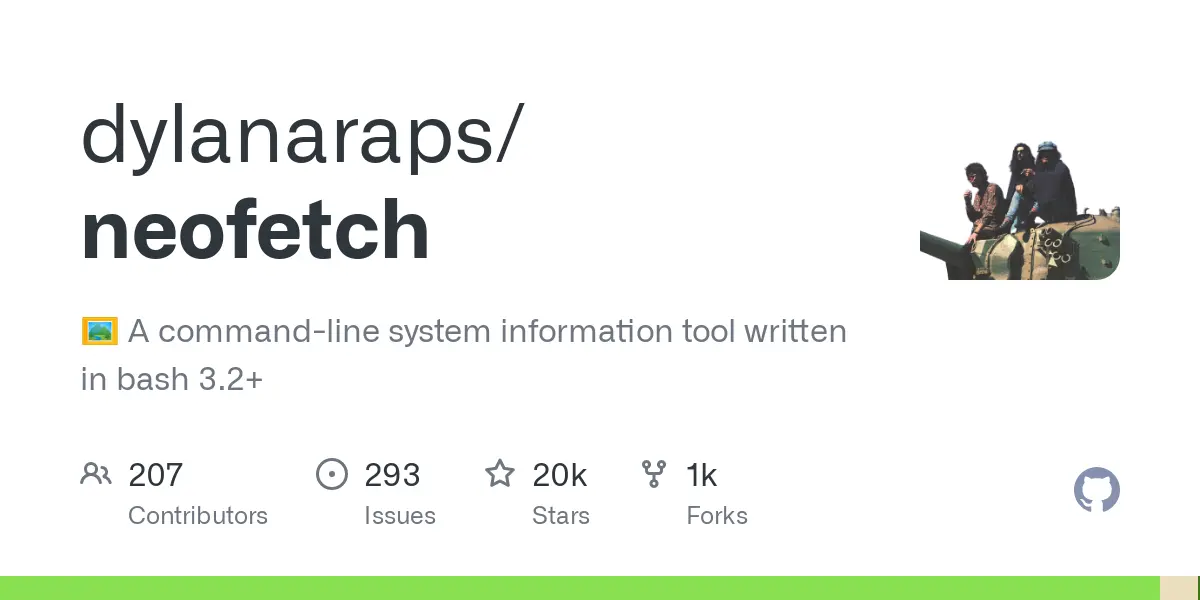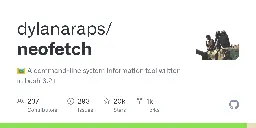Neofetch development discontinued, repository archived
Neofetch development discontinued, repository archived

github.com
GitHub - dylanaraps/neofetch: 🖼️ A command-line system information tool written in bash 3.2+

cross-posted from: https://programming.dev/post/13437386
The author's profile says this:
"Have taken up farming."
